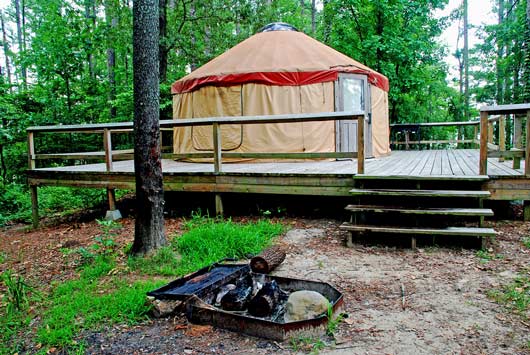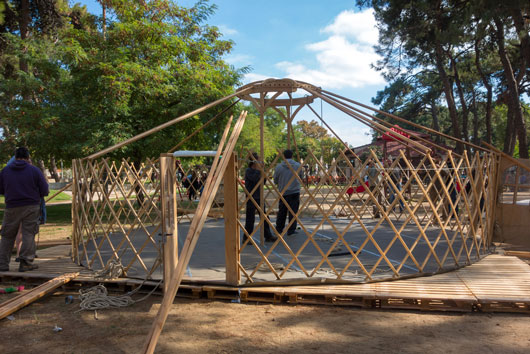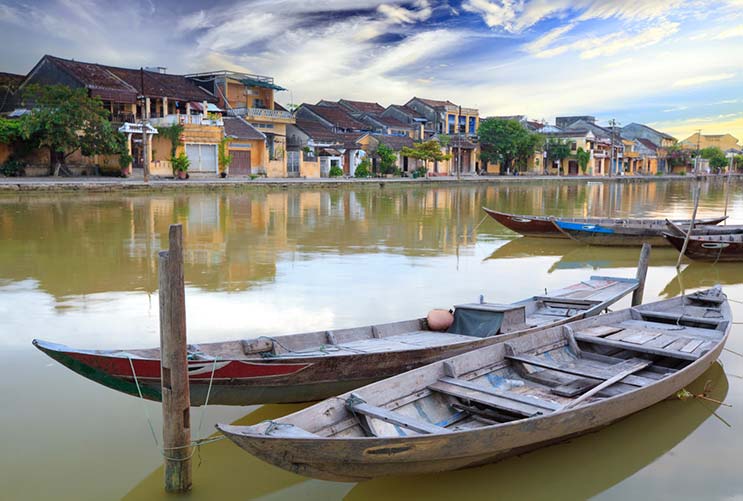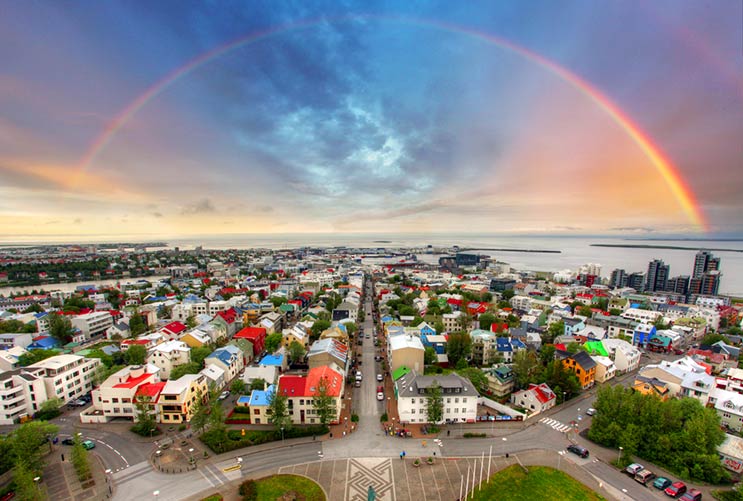
Though the yurt, an ancient cylindrical dwelling, provides the ultimate getaway for an eco-friendly urbanite of today, its origins were based on a quite different need. These sturdy and reliable tents allowed nomadic tribes a habitation that survived tough environmental conditions. It could be easily constructed, moved, and built with materials they had on hand, like sheep’s wool and some wood. And they seasonally adjusted to be warmer in the winter and cooler in the summer. Originating in Central Asia, yurts were first introduced in the U.S. by yurt pioneer William Coperthwaite in the 1960s. Today, their popularity has soared due to their affordability to rent, accessibility around the globe and because they’re gentle on the earth.
“People are very much affected by these structures, whether they are modern Americans or an indigenous person on the steppes of Central Asia [….]with its embracing walls and its open at the top architecture, it’s both a protective and soothing space, a symbol of the metaphysical quality of being open and receptive to what life has to bring you,” said Annie Raitt, co-founder of California Yurts, in an interview for the book Yurts: Living in the Round by Becky Kemery. “It has a very positive impact on the people who come into contact with it.” Here are 10 awesome facts about vacationing in a yurt that will make you want to flee your city now.
1. It Can Take on Any Weather Climate You Vacation To
From Alaskan snow to Caribbean heat, yurts withstand intense climates. Most yurt companies now make their covers from a reflective insulation developed by NASA, designed to withstand winds up to 100 mph. And their round shape makes yurts more efficient to heat than square houses.
Read Related: Way Up There: 10 Treehouse Hotel Retreats for the Unconventional Vacationer

2. Fast to Assemble for Big Families
The beauty of a yurt vacation, according to Business Insider, is that they can be assembled anywhere in the world and can take between 30 minutes and 3 hours to set up or take down, and usually house between five and 15 people.
3. Yurts are for Royalty, it Wears a Crown
In a yurt’s structure the crown is the central part; it’s a ring to which the poles of the roof are attached. It’s partially open so that air can circulate and a chimney can penetrate. A crown is often passed down for generations in Eastern cultures.

4. 24-Hour Sky Access
Most yurts have a wide skylight that floods the yurt with natural light and allows you to lie in bed at night looking up at the stars.
5. Round Space Living
We’ve lived in squares all our lives; it’s time to try some curved walls. The domed ceiling of a 24-foot yurt rises fifteen feet, creating a sense of this big, round, open space that frees your mind.
6. Listen to the Rain Drumming on the Roof
Feel a wave of relaxation come over you as you lie in bed knowing you are warm, dry and cozy, while the sound of the rain drums over your own private yurt.

7. Like Camping, but Without the Discomfort
Want to be involved in nature, see animals, go on hikes, and then at night have a drink after a hot shower? Yurts offer a taste of the wild, with the comforts of a hotel.
8. Some Yurts Have Wood or Gas Burning Stoves
Keep a kettle on the boil for some cozy tea breaks or slow cook a casserole while you and your family play board games in the middle of the wilderness.

9. Leaves a Small Footprint
Fabric yurts are highly eco-friendly and sustainable. They leave a very light footprint and require far fewer of the earth’s resources than a traditional stick built home.
10. You Can use a Compost Toilet
Hey, even though it may be a little weird at first, there are many advantages in using natural waste treatment systems like compost toilets: you use less water, you create human fertilizer, and you can set up a compost toilet in unusual places in nature.











